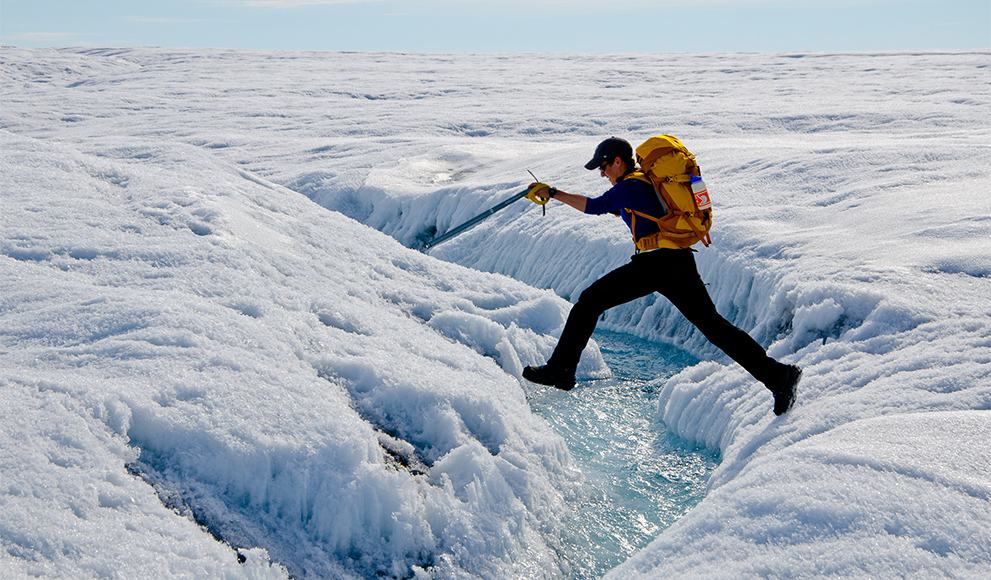Critical Research Addresses Supraglacial Lake Phenomenon

Laura Stevens ’11 is lead author on a paper published this month in the prestigious scientific journal Nature. Her work addresses a phenomenon that has puzzled scientists for years. Stevens is a current graduate student at the MIT/Woods Hole Oceanographic Institution Joint Master’s Program. Her research has received extensive coverage in the Washington Post and Science Daily, among other outlets.
Lakes that form on top of Greenland’s ice sheets are known as supraglacial lakes because of their massive size. Occasionally, these lakes vanish, sometimes within a matter of hours, without discernible cause. According to the Washington Post article, in July 2006 a large lake, over 2 square miles in area, lost most of its water in under two hours at a rate of drainage researchers calculated to be in excess of “the average flow rate over Niagara Falls.” Scientists worried that such rapid drainage would exponentially affect sea level rise, but could not offer an explanation as to how some lakes would suddenly disappear and some would not.
Together with her research team, Stevens found that lakes were draining through gigantic vertical cracks in the ice core, caused by accumulating tension between the bedrock and base of the ice. Subsequently, the force by which the water flows through the cracks creates new pathways for the lake water to further filter out. The water lubricates the bottom on the ice sheet, causing it to slide into the ocean and increase sea level. The findings are a monumental contribution toward explaining the mechanisms of the Greenland Ice Sheet and its implications on sea level rise. As a result, the scientific community gains a more complete understanding of global warming.
Stevens credits Wellesley’s liberal arts foundations for helping her understand scientific research in conjunction with societal problems. At Wellesley, she said she found herself drawn to research questions that aim to fill in the “scientific gaps that hinder climate change predictions and preparedness.”
“The entire geosciences faculty and coursework were hugely impactful,” said Stevens. She learned how to think about and tackle four-dimensional situations in the earth sciences – skills she now uses to approach almost every problem. David Hawkins, associate professor of geosciences, taught and advised Stevens while she was a student. He described her as “an intrinsically motivated student, focused on learning.”
Outside of the classroom, Stevens was a member of the Ultimate Frisbee Team and co-captained the team her senior year. She was also a hooprolling champion, and paid homage to the beloved Wellesley tradition this year as she passed through the Wellesley Scream Tunnel while running the Boston Marathon.
Stevens plans to travel to Oxford this fall to continue her research. She’s interested in seeing the timeline response of the ice sheet following the lake drainages, and furthering her understanding of this extraordinary phenomenon.
– Grace Li ’17 contributed to this story.
